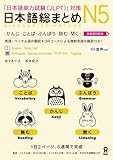When learning Japanese, understanding how to express relationships involving direction, such as “to” and “from,” is crucial. Whether you’re sending a message, giving a gift, or talking about a favor, knowing how to use these concepts correctly can enhance your communication skills. In this guide, we’ll explore the different ways to convey “to” and “from” when referring to people, along with helpful examples and phrases. With clear explanations and practical usage tips, you’ll be able to express yourself confidently in various situations. Let’s get started on mastering “to/from someone” in Japanese!
JLPT Textbook Recommendations
Verb
- あげます – agemasu – To give
- もらいます – moraimasu – To get / receive
- 貸します (かします) – kashimasu – To lend
- 借ります (かります) – karimasu – To borrow
- 返します (かえします) – kaeshimasu – To return / give back
- 教えます (おしえます) – oshiemasu – To teach
- 習います (ならいます) – naraimasu – To learn
- 電話をかけます (でんわをかけます) – denwa o kakemasu – To call (phone)
- 送ります (おくります) – okurimasu – To send
To someone
に (ni) shows the direction of an action toward someone. When you give something to someone, teach to someone, or send something to someone, you use に (ni) to show who is receiving the action.
- I give a present to my friend
友達にプレゼントをあげます
tomodachi ni purezento o agemasu - I teach Japanese to my student
学生に日本語を教えます
gakusei ni nihongo o oshiemasu - I send an email to my teacher
先生にメールを送ります
sensei ni meeru o okurimasu
From someone
When you want to say that you received something from someone, you use the particles に (ni) or から (kara).
- I got a present from my friend
友達からプレゼントをもらいました
Tomodachi kara purezento o moraimashita - I learned piano from my teacher.
先生にピアノを習いました
sensei ni piano o naraimashita - I borrowed a pen from my friend
友達にペンを借りました
tomodachi ni pen o karimashita




コメント